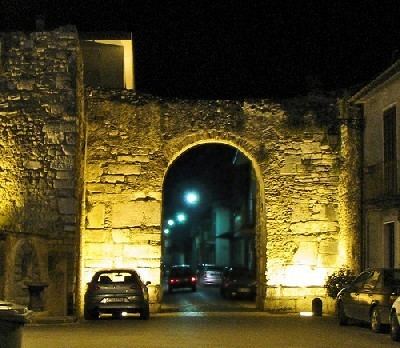Demonym(s) Alifani Local time Saturday 2:34 PM | Elevation 110 m (360 ft) | |
 | ||
Frazioni Sna Michele and Totari. Weather 12°C, Wind N at 24 km/h, 78% Humidity Points of interest Anfiteatro romano di Allifae, Criptoportico romano, Mausoleo Dei Campisi, Mura repubblicane di Allifae | ||
Alife is a town and comune in the province of Caserta (Campania), Italy. It is located in the Volturno valley, and is a flourishing centre of agricultural production.
Contents
- Map of 81011 Alife Province of Caserta Italy
- Ancient history
- Later history
- Main sights
- Transportation
- International relations
- References
Map of 81011 Alife Province of Caserta, Italy
Ancient history
The name of Alife has Samnite origin, although a settlement in the hills around the city existed probably since the Iron Age. After the First Punic War, it became a Roman municipium, with the name of Alliphae - the ruins of which extend to the nearby comune of Sant'Angelo d'Alife.
Later history
A bishopric was present in Alife in the 5th century, but in the following century it disappeared. The city was a Lombard possession, as part of the Duchy of Benevento and, later, of the Principality of Capua. The bishop was reinstated in 969, four years after the city became an independent county.
In 1132, the Norman Count Ranulf (one of the most outstanding military leaders of medieval Italy) began the construction of Alife Cathedral. At this time, Alife, together with other centers of northern Campania, was almost independent from Capua, and began governing itself. This, of course, caused increasing strife with the central power of the Norman Kingdom of Sicily (created by Roger II in 1130). In 1135, the city was occupied by Sicilian troops; but, two years later, Count Ranulf had his vengeance, obtaining the title of Duke.
However, in 1138, the city was again captured, largely destroyed and occupied by a Sicilian contingent. In 1169, the counts obtained again autonomy; in 1178, the city was handed over to Richard Caetani of Fondi. The Quarrel family returned in 1191, after the descent of Emperor Henry VI, but was ousted forever in 1197, and the city assigned to the German family of Schweisspeunt. Alife was subsequently ruled by several baronal families of the Kingdom of Naples, who did little to improve its conditions. The neighbouring area became increasingly marshy, and the city decayed, being almost wholly abandoned after the 14th century. Many of the citizens took refuge in the surrounding hills.
In 1561, the Spanish king Philip II had the city destroyed to punish its seigneur, Ferrante II Diaz Garlon, who had had a part in the assassination of the king's sister. The cathedral collapsed in the 1688 earthquake. Alife started to recover only after the abolition of feudalism in 1806; in 1861 it became part of the newly formed Kingdom of Italy.
Main sights
Alife's main attractions include:
Transportation
The town counts a railway station on the Alifana Railway line Santa Maria Capua Vetere-Piedimonte Matese. It is linked with regional trains to the main stations of Caserta and Napoli Centrale.
International relations
Alife is twinned with:
